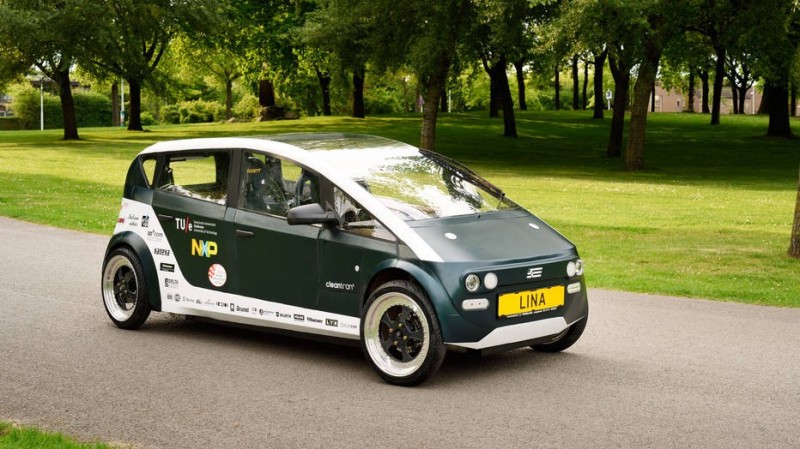The Lina is a Truly Green Vehicle

Some of us have owned cars that were biodegradable, even though they were not designed that way. If you owned either a Fiat or a Ford Pinto from the 1970s, you know that those vehicles would fall apart or melt on occasion, but that does not really qualify as being truly biodegradable.
At CARSTAR T&S Body Works, we love sharing fun green-related blogs with our readers in Tempe and all over the State of AZ, so we were intrigued when we first saw this news story about a new university student project in the Netherlands where they have created a vehicle called the Lina that is designed to be biodegradable.
The body shell of the Lina was conceptualized by a team at the highly-regarded Eindhoven University of Technology from a resin that is processed from sugar beets and covered with woven flax. The final material that they have created is said to be equal in strength to fiberglass. For body stiffness and overall structure, these body panels contain a sophisticated honeycomb structure that is adhered between two separate sheets of flax composite.
 The chassis itself is manufactured from aluminum, featuring MacPherson strut front suspension and trailing arm rear suspension, with disc brakes in the front and the back. This completely "green" vehicle is electric and has two motors that get energy from three lithium-ion batteries, with a maximum range of roughly 62 miles on a complete charge. The total weight of the Lina is only 683 pounds, which makes makes it more efficient than the new Nissan Leaf, even though it doesn't its range.
The chassis itself is manufactured from aluminum, featuring MacPherson strut front suspension and trailing arm rear suspension, with disc brakes in the front and the back. This completely "green" vehicle is electric and has two motors that get energy from three lithium-ion batteries, with a maximum range of roughly 62 miles on a complete charge. The total weight of the Lina is only 683 pounds, which makes makes it more efficient than the new Nissan Leaf, even though it doesn't its range.
More and more carmakers are now opting for lightweight materials, such as aluminum or carbon fiber in order to create lighter, more proficient cars, the students at Eindhoven University of Technology reported. Processing these materials, however, requires 5-6 times more energy than steel, for example. Consequently, the energy that is initially saved while driving the vehicle is now spent during the production phase. In addition, the students said, the recyclability of the Lina's lightweight materials lacks significantly when compared to steel.
The Lina has been showcased the Netherlands, in order to raise awareness of biodegradable materials used in automobiles--a strategy that many automakers have yet to integrate into their car manufacturing on a significant level. The idea is to get away from using a lot of plastics and more multifaceted parts that cannot be taken apart and recycled easily.
Sources: Wikipedia, CNN and BBC



 The chassis itself is manufactured from aluminum, featuring MacPherson strut front suspension and trailing arm rear suspension, with disc brakes in the front and the back. This completely "green" vehicle is electric and has two motors that get energy from three lithium-ion batteries, with a maximum range of roughly 62 miles on a complete charge. The total weight of the Lina is only 683 pounds, which makes makes it more efficient than the new Nissan Leaf, even though it doesn't its range.
The chassis itself is manufactured from aluminum, featuring MacPherson strut front suspension and trailing arm rear suspension, with disc brakes in the front and the back. This completely "green" vehicle is electric and has two motors that get energy from three lithium-ion batteries, with a maximum range of roughly 62 miles on a complete charge. The total weight of the Lina is only 683 pounds, which makes makes it more efficient than the new Nissan Leaf, even though it doesn't its range.